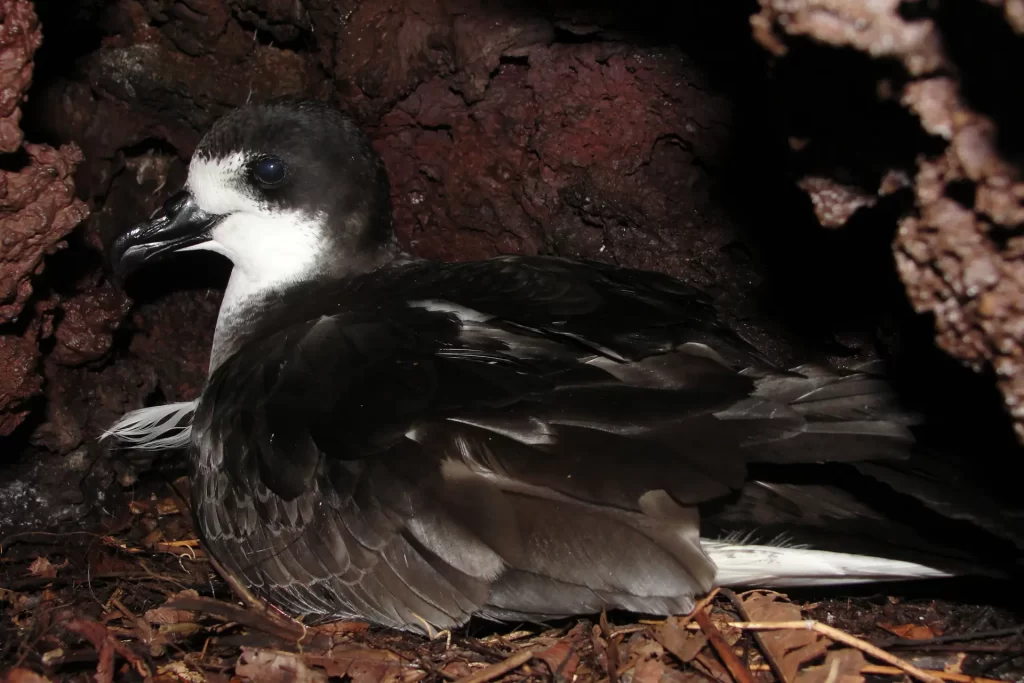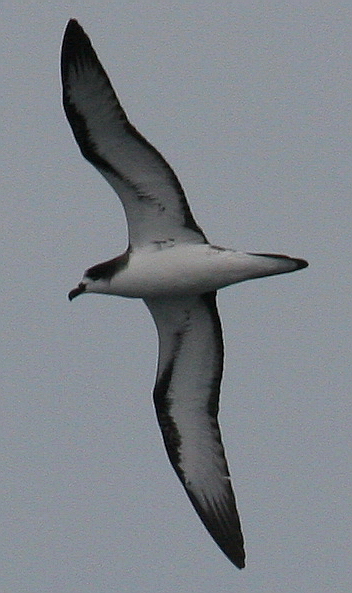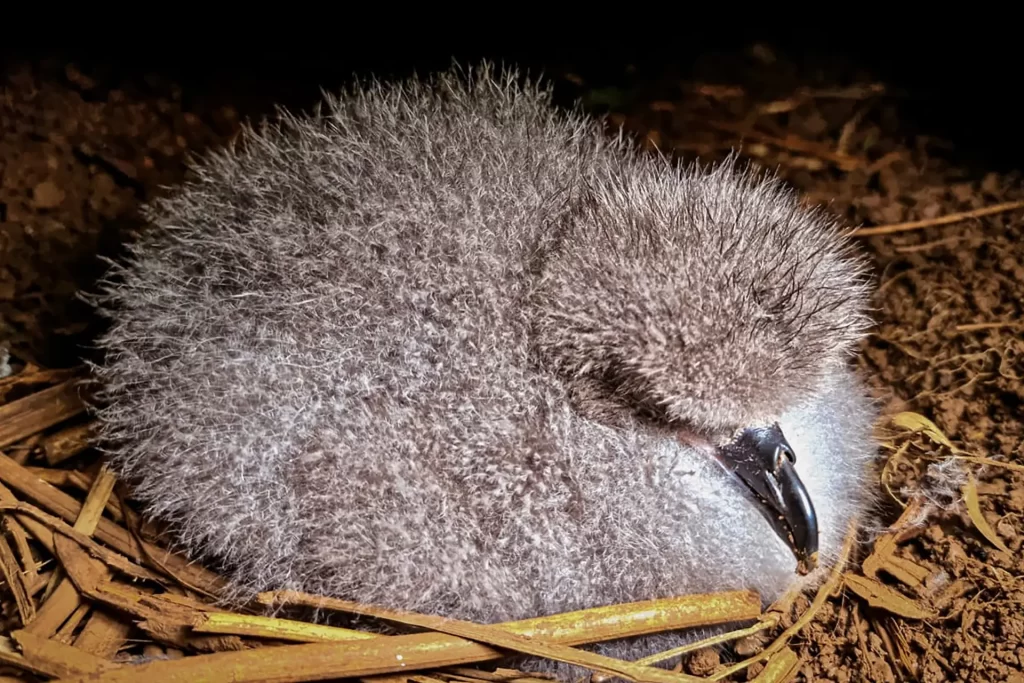
A Galápagos Petrel on its burrow nest, photograph from the Galápagos National Park Directorate
The Galápagos Petrel Pterodroma phaeopygia, endemic to Ecuador’s Galapagos Islands, is Critically Endangered. The species has been listed by the Convention on the Conservation of Migratory Species of Wild Animals (CMS) in Annex 1 since 1979 and has been proposed in the past for listing by the Agreement on the Conservation of Albatrosses and Petrels (ACAP). In 2019 the First International Meeting for the Conservation of the Galápagos Petrel (Primera Reunión Internacional para la Conservación del Petrel de Galápagos) was held in Puerto Ayora, Santa Cruz Island, Galapagos. The purpose of the meeting, which ACAP attended, was to bring together researchers, governmental agencies and non-profit groups with the shared interest of coordinating future conservation actions for Ecuador’s endemic petrel and to draft an action plan (click here).

Galápagos Petrel in flight, photograph by Eric VanderWerf
The Galápagos Petrel is known to breed on five islands: Floreana, Isabela, San Cristóbal, Santa Cruz and Santiago. Threats to the species include non-native species, both flora and fauna, and encroachment of human activities. To address these threats the environmental NGO Galápagos Conservancy has partnered with the Galápagos National Park Directorate to implement conservation projects on three of the breeding islands: Isabela, Santa Cruz and Santiago (click here for a summary of the plans for each island). ACAP Latest News has previously reported on the recent effort to eradicate feral cats and rodents on Floreana.

A downy Galápagos Petrel in its burrow, photograph from the Galápagos National Park Directorate
The Galápagos Conservancy writes: “With community support and international collaboration, we can ensure a future where these majestic birds continue to soar through the night skies of the Galápagos. Management measures and decisions based on technical criteria, thanks to studies conducted, will also be critical to the conservation of this species. The complex process of protecting this species demands constant effort, and we appreciate the support of our many donors, whose generosity supports the conservation actions implemented by our organization. Every action, no matter how small, counts in this fight for the survival of the Galápagos Petrel.”
ACAP held a one-day workshop on gadfly petrels of the genera Pterodroma and Pseudobulweria and other small petrels in Wellington, New Zealand in 2017, prior to the 10th Meeting of its Advisory Committee (AC10). Read the workshop report here.
John Cooper, Emeritus Information Officer, Agreement on the Conservation of Albatrosses and Petrels, 21 May 2024

 English
English  Français
Français  Español
Español